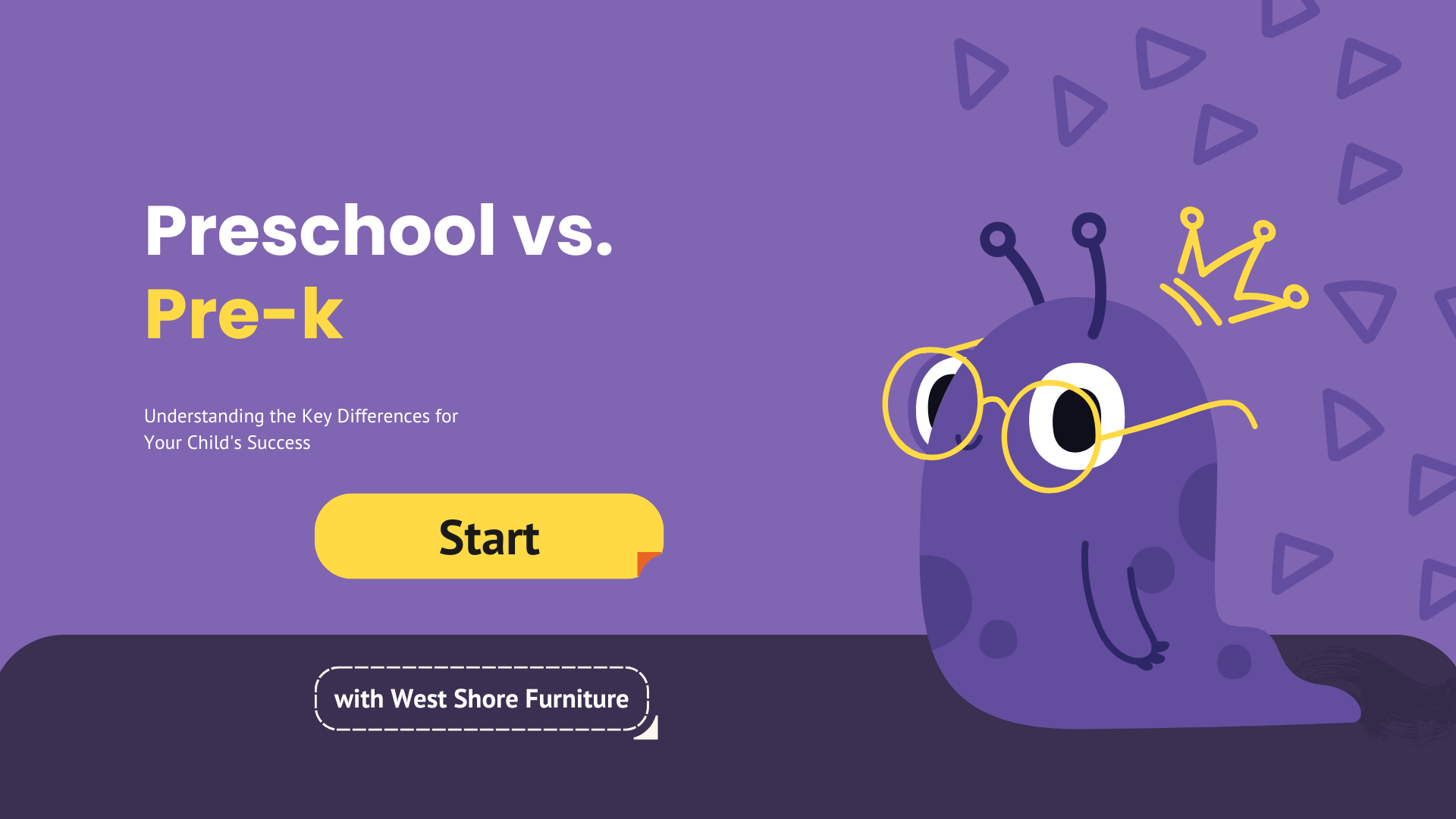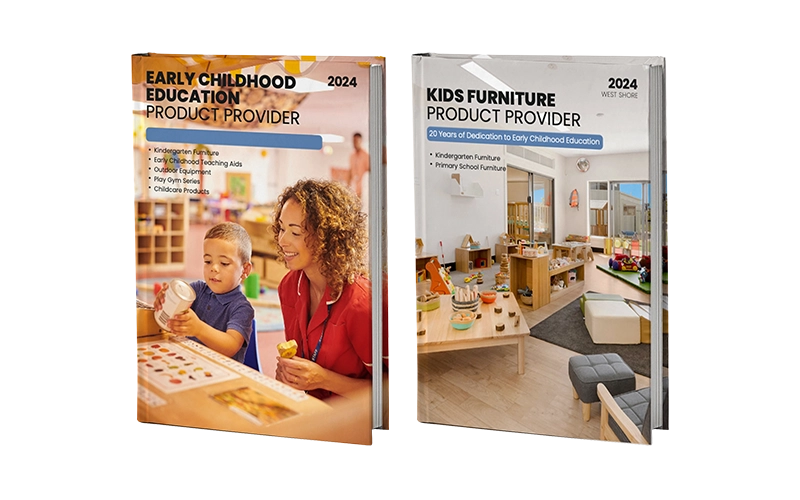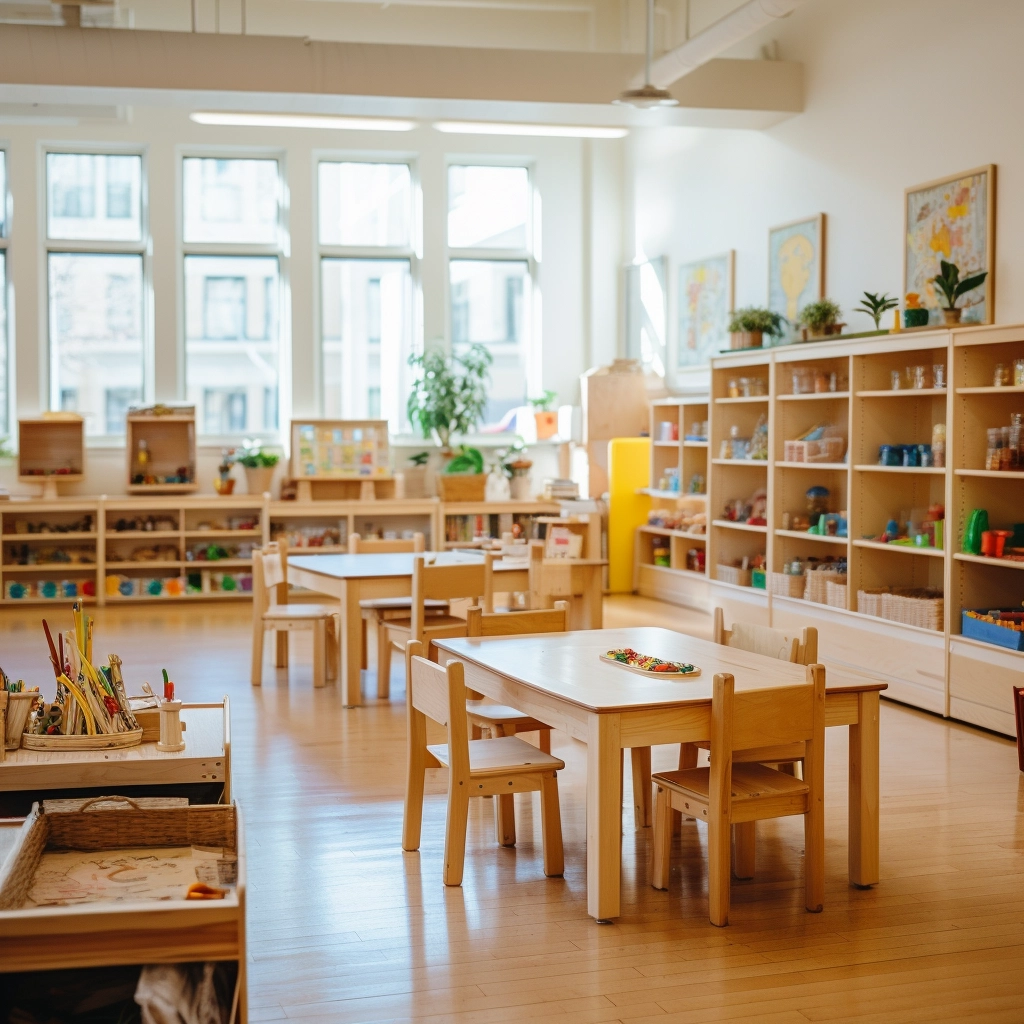Are you wondering whether your child needs preschool or pre-K? Many parents feel confused by the similar terms, yet the choice has a big impact on children’s development.
The main difference between preschool and pre-K is age group and educational focus. Preschool generally caters to children aged 3-4 years, focusing on basic social, motor, and cognitive skills. Pre-K vs preschool มักหมายถึงสภาพแวดล้อมที่มีโครงสร้างชัดเจนมากขึ้นเล็กน้อยที่โปรแกรมก่อนวัยเรียนจัดไว้สำหรับเด็กอายุ 4-5 ขวบ โดยเน้นไปที่การเตรียมเด็กๆ สำหรับโรงเรียนอนุบาล
การทำความเข้าใจความแตกต่างเหล่านี้จะช่วยให้คุณเลือกสภาพแวดล้อมทางการศึกษาของบุตรหลานได้ อ่านต่อไปเพื่อเรียนรู้เพิ่มเติมเกี่ยวกับคุณสมบัติของทั้งสองโปรแกรมและวิธีที่โปรแกรมเหล่านี้มีส่วนสนับสนุน การพัฒนาเด็กปฐมวัย.

Introduction: Preschool vs Pre-K
โรงเรียนอนุบาล:
Preschool is a child’s first formal experience with a สภาพแวดล้อมการเรียนรู้ที่มีโครงสร้าง. Children ages 3-4 are introduced to a more socialized, semi-structured setting that helps them grow cognitively, socially, and emotionally. The preschool programs emphasize play-based learning, which fosters imagination, curiosity, and exploration. These early goals for PreK focus on developing the foundation for future academic success.
เด็กๆ จะได้เรียนรู้แนวคิดพื้นฐาน เช่น ตัวอักษร ตัวเลข สี และรูปทรงต่างๆ ในขั้นตอนนี้ นอกจากนี้ เด็กๆ ยังได้รับการส่งเสริมให้โต้ตอบกับเด็กคนอื่นๆ ซึ่งจะช่วยพัฒนาทักษะการเข้าสังคมอีกด้วย โรงเรียนอนุบาลไม่ได้มุ่งหมายให้เน้นการเรียนรู้ทางวิชาการอย่างเข้มงวด แต่เป็นสภาพแวดล้อมที่เด็กๆ สามารถเรียนรู้ผ่านการเล่น พัฒนาทักษะพื้นฐาน และสร้างสติปัญญาทางอารมณ์และสังคม
ขั้นตอนนี้มีความสำคัญในการวางรากฐานสำหรับประสบการณ์การศึกษาในอนาคตของเด็ก ผู้ปกครองสามารถคาดหวังให้ลูกของตนมีความเป็นอิสระ พัฒนาทักษะชีวิต ทักษะการเคลื่อนไหวและพัฒนาความเข้าใจเกี่ยวกับกิจวัตรประจำวันในห้องเรียน โรงเรียนอนุบาลเป็นเรื่องของความเชี่ยวชาญและพื้นฐาน ไม่ใช่แรงกดดัน
ก่อนวัยเรียน:
Pre-K, short for pre-kindergarten, serves children the year before they enter kindergarten, typically around ages 4 to 5. Pre-K programs are more focused on preparing children for the academic and social challenges they will face in kindergarten. While still incorporating play, pre-K introduces a more structured environment, with a curriculum that includes reading readiness, basic math concepts, and writing skills. These programs align with early activities for pre-K and kindergarten and are designed to help children meet key developmental milestones.
ในช่วงก่อนวัยอนุบาล เด็กๆ จะเรียนรู้ที่จะปฏิบัติตามตารางและกิจวัตรประจำวันที่มีโครงสร้างชัดเจนมากขึ้น เพื่อเตรียมความพร้อมสำหรับการเรียนในชั้นเรียนที่พวกเขาจะต้องเจอในชั้นอนุบาล ครูในชั้นเรียนก่อนวัยอนุบาลมักเน้นที่การสร้างทักษะที่จะช่วยให้เด็กๆ ประสบความสำเร็จในสภาพแวดล้อมของโรงเรียน เช่น การปฏิบัติตามคำสั่ง การแบ่งปัน การผลัดกันเรียน และการพัฒนาทักษะการควบคุมตนเอง
นอกจากนี้ โปรแกรมก่อนวัยเรียนจะเน้นด้านวิชาการมากกว่าระดับก่อนวัยเรียนเล็กน้อย โดยเน้นที่ทักษะการอ่านเขียน การคำนวณ และแนวคิดวิทยาศาสตร์พื้นฐาน เด็กๆ ควรมีความพร้อมสำหรับการเรียนชั้นอนุบาลทั้งด้านสังคมและวิชาการเมื่อสิ้นสุดระดับก่อนวัยเรียน
Why Preschool and Pre-K Are Important?
Research shows that quality early childhood education, whether it is preschool or pre-K, makes a real difference in a child’s future. Studies from the National Institute for Early Education Research (NIEER) find that children who attend strong preschool programs often develop better language, thinking, and social skills than those who do not. The American Educational Research Association (AERA) also highlights that early learning helps children feel more prepared for kindergarten and supports long-term success, such as staying on track in school and graduating from high school.
Preschool is important because it gives children aged 3–4 a safe and playful environment where they develop independence, social interaction, and early curiosity. Pre-K, serving children aged 4–5, plays an equally crucial role by reinforcing literacy, numeracy, and self-regulation skills that bridge the gap to kindergarten. According to research from Harvard’s Center on the Developing Child, building these foundational skills early not only supports academic learning but also fosters resilience and positive lifelong attitudes toward education (Harvard Center Resource).
Together, preschool and pre-K provide a continuum of learning opportunities. Each stage is important in its own way. Preschool lays the foundation through exploration and play, while pre-K strengthens academic and social readiness for formal schooling.

ก่อนวัยเรียนหรือก่อนอนุบาล: ลูกของคุณควรเข้าเรียนที่โรงเรียนไหน?
ก่อนวัยเรียน:
Pre-K is ideal for children about to enter kindergarten or who are in their final year before kindergarten. If your child is 4 to 5 years old and ready to begin focusing on more structured learning, pre-K offers an excellent foundation. It provides a more academic environment focusing on early literacy, basic math concepts, and social-emotional skills necessary for kindergarten. Pre-K is perfect if your child is ready for a more routine-based setting and you want them to develop school readiness skills, such as following instructions, working with others, and engaging in activities that prepare them for the expectations of elementary school.
นอกจากนี้ ค่าเล่าเรียนก่อนวัยเรียนอาจแตกต่างกันไป ขึ้นอยู่กับสถานที่และหลักสูตรที่เป็นของรัฐหรือเอกชน แต่สิ่งสำคัญคือต้องคำนึงถึงประโยชน์ในระยะยาวของการศึกษาในช่วงปฐมวัยด้วย
โรงเรียนอนุบาล:
Preschool is ideal for younger children, typically between 3 and 4. It offers a more relaxed, play-based environment, fostering independence and exploration if your child is in the early stages of social, emotional, and cognitive development. Preschool is less focused on academic achievement and more on helping children develop foundational skills, such as social interaction, communication, and motor skills. Preschool is an excellent choice if you want your child to experience a low-pressure setting while learning key early skills.
สมมติว่าบุตรหลานของคุณยังคงคุ้นเคยกับการอยู่ในกลุ่มและเรียนรู้บรรทัดฐานทางสังคมพื้นฐาน ในกรณีนั้น โรงเรียนอนุบาลสามารถเป็นสภาพแวดล้อมที่เสริมสร้างให้เด็กๆ สามารถพัฒนาตนเองได้ ช่วยให้เด็กๆ สามารถสร้างรากฐานทางอารมณ์และสังคมของตนเองก่อนเข้าสู่โลกวิชาการที่มีโครงสร้างมากขึ้นของโรงเรียนอนุบาล
Preschool vs Pre-K: What Certifications Do Teachers Need?
ไม่ว่าจะสอนในระดับก่อนวัยเรียนหรือก่อนวัยอนุบาล ครูการศึกษาปฐมวัยก็มีบทบาทสำคัญในการกำหนดประสบการณ์การเรียนรู้ครั้งแรกของเด็ก อย่างไรก็ตาม สิ่งที่ผู้ก่อตั้งโรงเรียนหรือเจ้าหน้าที่จัดซื้อจัดจ้างหลายคนอาจมองข้ามไปก็คือ คุณสมบัติที่จำเป็นสำหรับครูเหล่านี้ไม่ได้เหมือนกันเสมอไป และมักขึ้นอยู่กับกฎระเบียบในภูมิภาคและปรัชญาการศึกษาของโรงเรียน
ข้อกำหนดทั่วไปสำหรับครูระดับก่อนวัยเรียน
ในประเทศส่วนใหญ่ ครูระดับอนุบาลต้องมีใบรับรองหรือประกาศนียบัตรในสาขาการศึกษาปฐมวัย (ECE) หรือสาขาที่เกี่ยวข้อง เอกสารทั่วไป ได้แก่:

- ใบรับรองหรือประกาศนียบัตรการศึกษาปฐมวัย (ECE)
โดยทั่วไปแล้วนี่คือข้อกำหนดขั้นต่ำสำหรับการทำงานกับเด็กอายุ 3-4 ปี ซึ่งจะช่วยให้ครูมีทักษะในการพัฒนาเด็ก การจัดการชั้นเรียน และการเรียนรู้ผ่านการเล่น - ใบรับรองการช่วยชีวิตขั้นพื้นฐานและการปฐมพยาบาล
เนื่องจากโรงเรียนอนุบาลเกี่ยวข้องกับกิจกรรมทางกายและเด็กเล็ก การฝึกอบรมด้านสุขภาพและความปลอดภัยจึงมีความจำเป็น - การตรวจสอบประวัติ / การกำจัดการล่วงละเมิดเด็ก
หน่วยงานออกใบอนุญาตส่วนใหญ่ต้องการหลักฐานว่าครูไม่มีประวัติอาชญากรรมหรือความผิดเกี่ยวกับการล่วงละเมิดเด็ก - ใบอนุญาตหรือการขึ้นทะเบียนการสอนท้องถิ่น (ถ้ามี)
ในบางพื้นที่ ครูจะต้องลงทะเบียนกับคณะกรรมการการศึกษาท้องถิ่นหรือหน่วยงานของรัฐก่อนจึงจะได้รับอนุญาตให้ทำงานในสถานที่ปฐมวัยได้
ข้อกำหนดเพิ่มเติมสำหรับครูระดับก่อนอนุบาล
เนื่องจาก Pre-K มีโครงสร้างทางวิชาการที่มากกว่าและเตรียมเด็กๆ ให้พร้อมสำหรับโรงเรียนอนุบาล ความคาดหวังต่อครูจึงอาจสูงกว่า:
- ปริญญาตรีสาขาการศึกษาปฐมวัยหรือสาขาที่เกี่ยวข้อง
โปรแกรม Pre-K ที่ได้รับทุนสนับสนุนหรือได้รับการรับรองจากรัฐบาลหลายแห่ง โดยเฉพาะในสถานที่อย่างสหรัฐอเมริกา กำหนดให้ครูต้องมีวุฒิการศึกษาระดับปริญญาตรี - ใบรับรองการสอนของรัฐ (เช่น ใบอนุญาตการสอน หรือการรับรองก่อนวัยเรียน)
ในบางภูมิภาค การสอนเด็กก่อนวัยเรียนในสถานที่สาธารณะต้องมีใบอนุญาตการสอนที่มีความเชี่ยวชาญหรือการรับรองในช่วงปฐมวัย - การฝึกอบรมหลักสูตร (เช่น มอนเตสซอรี เรจจิโอ เอมีเลีย หรือวิธีการเฉพาะอื่นๆ)
ครูมักจะต้องได้รับการรับรองเพิ่มเติมจากองค์กรฝึกอบรมเฉพาะสำหรับโปรแกรมก่อนวัยเรียนตามปรัชญาการศึกษาเฉพาะ เช่น มอนเตสซอรี - ชั่วโมงการพัฒนาวิชาชีพอย่างต่อเนื่อง
สถาบันต่างๆ จำนวนมากกำหนดให้ครูระดับก่อนอนุบาลต้องเข้ารับการฝึกอบรมรายวิชาประจำปี เช่น จิตวิทยาเด็ก การศึกษาแบบองค์รวม หรือเทคโนโลยีในห้องเรียน
ต้นกำเนิดของโรงเรียนอนุบาลและปฐมวัย
The idea of early education did not appear overnight. It grew out of a long tradition of educational reformers who believed that the early years of life are the foundation for later success. By the late 19th and early 20th centuries, movements in Europe emphasized the importance of structured environments where young children could learn through play, interaction, and guided exploration. Out of this movement came what we now recognize as preschool, while the concept of pre-K would not emerge until much later in the United States.
Preschool owes much of its development to the work of Friedrich Fröbel, who opened the first kindergarten in Germany in 1837, and Maria Montessori, who in the early 1900s introduced her child-centered method. Froebel’s vision focused on play, creativity, and nurturing imagination, while Montessori emphasized independence, sensory-based learning, and purposeful activity. These two approaches shaped preschool as a place for children ages 3–4 to grow socially and emotionally in a safe, exploratory setting before formal schooling.

Pre-K, on the other hand, arose in the United States during the 1960s as part of a broader effort to reduce educational inequality. The Head Start program, launched in 1965, was designed to prepare children from disadvantaged backgrounds for kindergarten by focusing on language, literacy, and social skills. Unlike preschool, which grew from educational philosophy, pre-K was rooted in public policy and research on school readiness, targeting children aged 4–5 with a more structured approach to ensure they could succeed in elementary school.
Origins Compared
| ด้าน | Preschool (Ages 3–4) | Pre-K (Ages 4–5) |
|---|---|---|
| Historical Roots | Froebel’s Kindergarten (1837); Montessori’s Method (1900s) | Head Start program in the U.S. (1965) |
| Primary Motivation | Encourage play, independence, imagination | Ensure school readiness, reduce inequality |
| Educational Focus | Play-based exploration, social-emotional growth | Encourage play, independence, and imagination |
การเลือกสิ่งที่เหมาะสมกับลูกของคุณ
Choosing between Preschool and pre-K is not just about age. It is about understanding your child’s developmental stage, emotional needs, and readiness for academic structure. Both paths offer essential foundations for lifelong learning, but each serves a different purpose in early childhood education. Whether your child thrives in a play-based environment or is ready for more focused academic preparation, making an informed decision will help set them up for long-term success.
ที่ เวสท์ชอร์เฟอร์นิเจอร์, we understand how important it is for educators and school founders to create the right learning environment from day one. We offer a full-service solution for teachers preparing to open Preschool or pre-K classrooms. From thoughtfully designed Montessori and Reggio-inspired furniture to high-quality classroom materials, our products are crafted to support both play-based and academically structured learning. We help you align your classroom setup with educational goals, whether you are fostering imagination in Preschool or encouraging early literacy and math in pre-K.
By choosing West Shore Furniture, you are not just purchasing furniture. You are partnering with a team that understands early childhood education’s pedagogical and practical needs. We help educators focus on what matters most: creating a nurturing, inspiring, and developmentally appropriate space for every child.
FAQ: Preschool vs Pre-K
ถาม: ความแตกต่างหลักระหว่างโรงเรียนอนุบาลและก่อนวัยเรียนคืออะไร?
A: The primary difference between preschool and pre-K lies in the age group and educational focus. Preschool typically serves children aged 3-4 years, focusing on foundational skills like socialization and basic motor skills. Pre-K, for children aged 4-5, offers a more structured environment with an emphasis on preparing for kindergarten, focusing on early literacy, numeracy, and following a more rigid routine.
ถาม: โรงเรียนอนุบาลหรือโรงเรียนอนุบาล 1 ดีกว่าสำหรับลูกของฉันหรือเปล่า?
A: การเลือกระหว่างโรงเรียนอนุบาลกับโรงเรียนอนุบาลขึ้นอยู่กับอายุและความพร้อมของบุตรหลานของคุณ โรงเรียนอนุบาลเหมาะสำหรับเด็กเล็ก (อายุ 3-4 ปี) ที่ยังอยู่ในช่วงเริ่มต้นของการพัฒนา ในขณะที่โรงเรียนอนุบาลเหมาะสำหรับเด็กอายุ 4-5 ขวบที่พร้อมสำหรับการเรียนรู้ทางวิชาการที่มีโครงสร้างมากขึ้น เพื่อเตรียมความพร้อมสำหรับชั้นอนุบาล
ถาม: เด็กๆ เรียนรู้ทักษะอะไรบ้างในระดับก่อนวัยเรียนเมื่อเทียบกับก่อนวัยอนุบาล?
A: ในระดับอนุบาล เด็กๆ จะเน้นที่ทักษะทางสังคม ทักษะการเคลื่อนไหว และแนวคิดทางวิชาการพื้นฐาน เช่น สี ตัวเลข และรูปทรง ในระดับอนุบาล หลักสูตรจะเน้นไปที่การเตรียมความพร้อมสำหรับชั้นอนุบาล โดยเน้นที่ทักษะการอ่าน การเขียน และคณิตศาสตร์เบื้องต้น ตลอดจนการปฏิบัติตามตารางเวลาและกิจวัตรประจำวันอย่างเป็นระบบ
ถาม: ลูกของฉันสามารถเข้าเรียนทั้งชั้นอนุบาลและประถมศึกษาปีที่ 1 ได้หรือไม่
ตอบ เด็กบางคนอาจเข้าเรียนอนุบาลเมื่ออายุ 3 ขวบและเปลี่ยนไปเรียนชั้นอนุบาลในปีถัดไป แนวทางนี้ช่วยให้เด็กๆ ได้รับทักษะทางสังคมและอารมณ์พื้นฐานในชั้นอนุบาล จากนั้นจึงมุ่งเน้นไปที่ความพร้อมทางวิชาการในชั้นอนุบาล
ถาม: โปรแกรมก่อนวัยเรียนและก่อนวัยอนุบาลแตกต่างกันอย่างไรในแง่ของวิธีการสอน?
A: โรงเรียนอนุบาลมักเน้นการเรียนรู้และการสำรวจผ่านการเล่น ในขณะที่โรงเรียนอนุบาลจะเน้นกิจกรรมทางวิชาการมากกว่า รวมถึงบทเรียนที่มีโครงสร้างเกี่ยวกับการอ่านเขียนและการคำนวณเบื้องต้น โปรแกรมอนุบาลมักจะใช้หลักสูตรที่ออกแบบมาเพื่อให้แน่ใจว่าเด็กๆ พร้อมสำหรับความเข้มงวดของโรงเรียนอนุบาล
พบกับความเป็นเลิศในการดำเนินการ: โครงการบูติกของเรา
อยากรู้ไหมว่าโครงการโรงเรียนอนุบาลในชีวิตจริงที่ได้รับการออกแบบอย่างสวยงามของเรามีลักษณะเป็นอย่างไร
[คลิกที่นี่เพื่อสำรวจกรณีโครงการก่อนวัยเรียนหรือก่อนวัยอนุบาลจริงของเรา]






